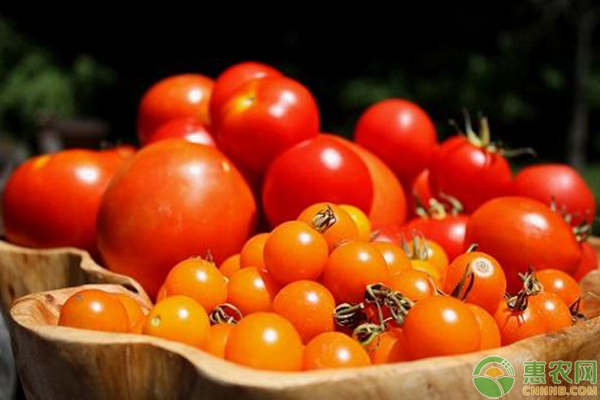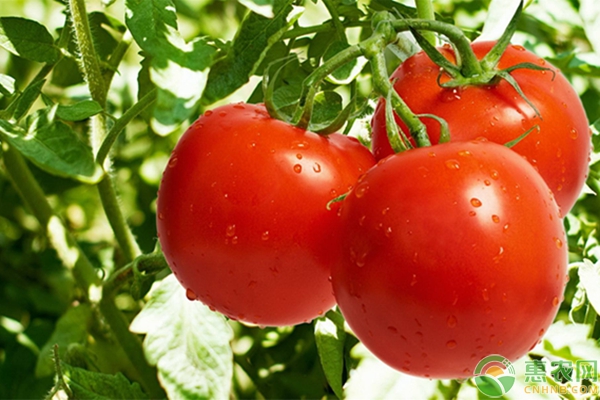With the continuous development of agricultural technology, the cultivation technology of greenhouses has become more and more perfect, which not only allows people to taste fresh fruits and vegetables throughout the year, but also increases production and income for many growers. The following small series will explain the planting technology of greenhouses in the southern region, and I hope to help you.

1 selection
1.1 Variety selection
Planting tomatoes in southern greenhouses should choose varieties with strong anti-freeze and disease resistance. Tomatoes can be divided into two types according to their growth habits, namely, infinite growth type and limited growth type (self-sealing top varieties). Infinite growth type, long flowering period, high yield; limited growth type, early flowering and concentration, concentrated supply time and relatively short. Tomato varieties suitable for planting in the south include “Golden Shed 1â€, “Ya Li 616â€, “Xinong 2011†and “Mao Powder 802â€.
1.2 Seed Selection and Processing
There are two criteria for seed selection, namely high germination rate and cold tolerance. First, the germination rate of the seeds should be tested. The higher the seed germination rate, the more abundant seeds, the higher the uniformity, the better embryo development, the stronger seed vitality and the better economic benefits of planting; in general, the germination rate of seeds is higher than 90%. Second, test the cold tolerance of the seeds. The temperature in southern China is higher, the seeds are more sensitive to cold and more vulnerable to freezing damage. Therefore, it is necessary to choose seeds with strong cold resistance. The selected seeds are generally treated as follows: 2d in sunny weather, soaked in 50% carbendazim for 30min, then rinsed, soaked in warm water of 40 °C for 4h, then soaked in 10% trisodium phosphate solution for 30min, clear water Wash. Wrap the seeds in wet gauze, place them at room temperature for germination, spray 2 to 3 times a day with warm water, and sown when 80% of the seeds are white.
2 sowing, planting
2.1 Sowing
The main supply time of greenhouse tomatoes is during the Spring Festival, suitable for planting from mid-August to early September. Put the nutrient soil into the nutrient bowl, put the nutrient bowl in the pot, ensure that the water in the pot is sufficient, and then put the seeds of the good shoot into the nutrient bowl, put one seed in each container, cover the soil, and the seedbed temperature is 25 ~30 °C. Before sowing to emergence, the greenhouse does not need to release the wind, after the seedlings are released (when the emergence rate is higher than 80%), the ventilation is refining, and the temperature in the shed is too high. The daytime temperature should be controlled at 25~30°C, and the nighttime temperature is 15~20. °C, before the seedlings are unearthed until the first true leaves are issued, special attention should be paid to the control of the temperature difference between day and night to prevent the seedlings from growing. After 7 to 8 true leaves appear, you can transplant. One week before planting, pay attention to ventilation, reduce seedbed temperature, less watering, and low temperature refining [4].
2.2 Colonization
Tomato has a long growth cycle and high fertility requirements. Therefore, it is necessary to apply sufficient base fertilizer before planting, and apply 2000kg of completely decomposed farmyard manure per 667m2. At the same time, use trace element fertilizer combined with tillage; and apply ternary compound every 667m2. 100kg of fertilizer, sprinkled on the surface of the land after tillage; in addition, 100kg of bean cake per 667m2, applied near the cultivation point. When planting, choose sunny day, select healthy and disease-free seedlings, plant in large and small plants, plant spacing of about 45cm, 2000 strains / 667m2. After planting, pour enough water and loosen the soil properly.

3 Fertilizer management
3.1 Irrigation requirements
When the seedlings are in the seedlings, they should not be watered before the first ear fruits are placed, and the roots should be kept under the roots; the third order fruit buds just flowering, the second order fruit broad beans before the size, or the first order fruit walnuts can not be watered before. . The first watering is started 3 to 5 days after the completion of the planting. Before the first ear of the fruit is stabilized, the tomato is mainly vegetatively grown. In the case of slow seedling water and planting water, the rest of the time basically does not require watering or top dressing.
3.2 Tomato Fertilization Requirements
The demand for nitrogen and potassium is large, and an appropriate amount of phosphorus is also required. After the first spike fruit is stable, 20~30kg/667m2 potassium sulfate compound fertilizer can be applied and watered. When the 2nd ear and the 3rd ear fruit are rapidly inflated, it is necessary to topdress in time, generally 3 times of topdressing, 20~25kg/667m2 potassium sulfate compound fertilizer. When the fruit is inflated, the leaf surface is applied with 0.2% potassium dihydrogen phosphate 2~3 times, which can effectively prevent pests and diseases and effectively promote fruit development.
4 Prevention and control of pests and diseases
The common pests and diseases of tomato mainly include gray mold, early blight, stem rot, etc. The main pests are aphids and ladybugs [6].
4.1 Gray mold
The disease is a low-temperature and high-humidity disease, and watering is minimized in the early stage of the disease. After the onset, the diseased fruit, diseased leaves, etc. are removed in time, and the greenhouse is buried or burned intensively. Before planting, use 50% keering WP 1500 times solution or 50% carbendazim WP 500 times to spray tomato seedlings to ensure that disease-free seedlings enter the shed.
It can also be used for flowering during flowering. When the first ear is flowering, add 0.1% 50% quick-acting WP or 50% moldy wettable powder to the scented scented flower. Flower or smear; the third medication is in the first 1 d of the water, with 65% methicillin WP 800 times, or 50% carbendazim WP 700 times, or 50% Mildew WP 700 times solution control.

4.2 Early blight
The onset often starts from the lower leaves and gradually spreads upwards. In severe cases, the lower leaves are all dead, which can damage the leaves, stems and fruits.
The following methods can be used for prevention and treatment:
(1) Carrying out 3 to 5 years of rotation and smashing with non-solanaceae crops;
(2) Selecting resistant varieties is conducive to preventing the occurrence of diseases;
(3) Soak seeds with 55~60 °C warm soup for 30 min, or soak seeds with 0.1% copper sulfate solution for 5 min, remove them, immerse them in lime water, rinse with water, and then sow;
(4) Strengthen field management, avoid low-water accumulation in the field, apply more phosphorus and potassium fertilizer, and improve the disease resistance of plants.
4.3 tendon rot
The rot disease can be controlled by fertilization. In the process of fertilization, the nitrogen fertilizer should not be excessive. In the severely ill areas of tomato, nitrate nitrogen such as sodium nitrate should be applied, and ammonium nitrogen such as ammonium bicarbonate should not be applied as much as possible. Moreover, pay attention to the fertilization period of potassium fertilizer, generally during the period of fruit enlargement. After application twice, it is necessary to spray 0.2% glucose and 0.1% potassium citrate mixture in time to increase the content of sugar and potassium in the leaves.
4.4 Locust and ladybug
Aphids and ladybugs can be used with 25% solution of 50% aphid pine oil or 2000% solution with 20% chlorpyrifos. In addition, 2.5% deltamethrin EC 2000~3000 times solution, 2.5% Kung Fu The emulsifiable concentrate of 3000~4000 times has certain effects on the control of aphids and ladybugs.
Tissue Underpads are disposable absorbent pads that are placed under a patient to protect bedding, furniture, or other surfaces from bodily fluids, such as urine or blood. They are made of a soft, non-woven material that is gentle on the skin and have a waterproof backing to prevent leaks. Tissue underpads come in a variety of sizes and absorbency levels to meet the needs of different patients and situations. They are commonly used in hospitals, nursing homes, and home care settings.
Tissue Underpads,Underpads For Incontinence,Medical Waterproof Incontinence Underpads,Incontinence Bed Pads With Breathable Film
Honghu Danielle Sanitary Material Co., Ltd. , https://www.daniellecn.com